Prehistory
As early as the prehistoric time a central settlement stood on the rounded piece of land between the continent and the island of Ciovo. But apart from this settled lowland aria, surrounding hills were also inhabited in the second and first millenniums B.C. These settlements and fortified positions – citadels were built on riser which provided good view of the lowland around Trogir as well as the sea straits. Also the citadels guarded the natural routes leading to the hinterland. The settlement located in the sight of present-day Trogir, in the lowland, stood at the very centre of a ring shaped of a ring-shaped structure of citadels built on rises of the mainland as well as in the island of Ciovo. It has been suggested that the name of the Greek Tragurion derives from the denomination of the still older Illyrian settlement. Yet others suggested that the name of the town is a derivation of two Greek words, “tragos” (goat) and “oros” (hill) According to this hypothesis Tragurion would mean “a hill with goats”, which would be the Greek translation of an older Illyrian denomination whose meaning is kin to the name of the mountain Kozjak.
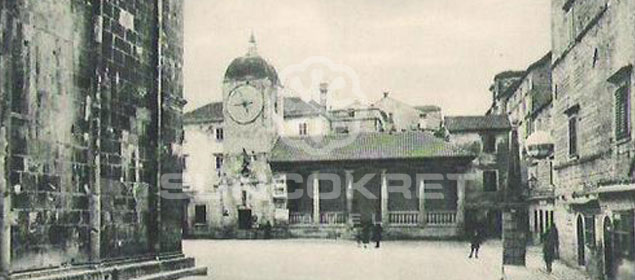
Trogir Square
Classical Era
The first information about the Greek settlement of Tragurion goes back to the 2nd century when the historian Polybius mentioned it in the connection with the attacks of the Illyrian tribe of Dalmatians who lived in the hinterland. But it was probably even earlier, at the close of the 3rd century or at the beginning of the 2nd centuries that Greek colonization had begun within the already existing settlement. In the course of the 1st century B.C. this Greek-Illyrian settlement became Roman municipium of Tragurium. The subsequent development of the nearby Salona, which was a true metropolis and leading town of all Dalmatia (Illyricum), was probably the main cause of the narrowing of municipal autonomy of Tragurium which became its satellite settlement. At this period people lived not only in wall-girdled cities but also in fields and in islands where they built manor houses called vilae rusticae. Roman colonists had their estates in smaller fields in their hinterland as well. In peaceful times the population abandoned old citadels and the safety of rises and built new settlements along roads.
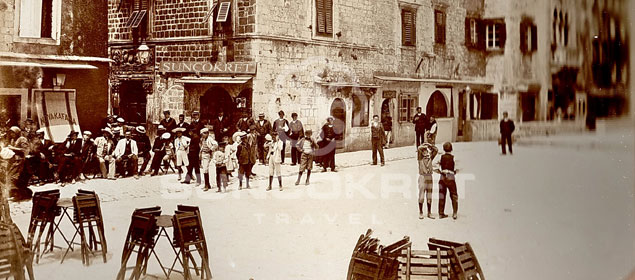
Trogir Square – History
Late Classical Era
It was the Late Classical era that Christianity reached the walls of Tragurium. The new religion had already taken root in nearby Salona. Vague ancient legends and stories relate the foundation of the Cathedral of Trogir to the nobleman of Salona. At the same period of the cult of the Salonitan bishop and martyr St. Domnius spread from its place of origin to the neighbor Trgurion. Judging from dedicatory inscriptions the whole sequence of the churches was erected in the city and its surroundings during the Late Classical and Proto-Byzantine period.
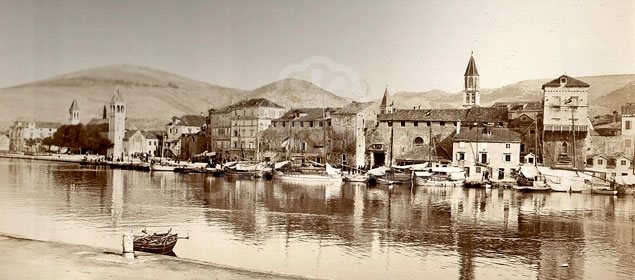
Seafront view of Trogir – history
Middle Ages
With the Avaro-Slavic invasion and the fall of Salona at the start of the 7th century the first Slavic settlers were recorded in the surrounding of Tragurium, along with the few surviving settlements, made part of Byzantine Dalmatia. In the 9th century the Croats built their first centers of their new state just here, close beside the ruins of Sicula and short distance to the east, near ruins of Salona. From this period on the Croatian language was the principal language of the town, even if the old Roman traditions were not forgotten. From the 9th century on Trogir, like other Dalmatian cities, in order to enjoy freely its landed possessions, pays a special tributes to the Croatian princes.
Apart of the Croatian rulers, the Republic of Venice showed the great interest in the Byzantine Dalmatia. From the 10th century its pressure increased so that in 998 the citizens of Trogir bound themselves by an oath to the Doge Pietro Oresolo. We may say that from the start of the 12th to the beginning of the 15th centuries; expect for few brief periods, the Trogirians recognized the sovereignty of the Hungaro-Croatian kings as their natural rulers. From the 12th century we can follow the transformation of the Commune into one of the aristocratic republics. The same period witnessed a considerable territorial expansion of Trogir.
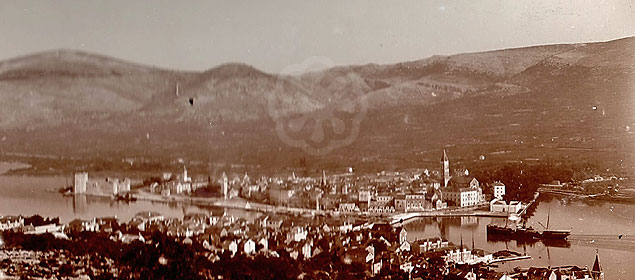
View on Trogir – History
On of the most important events in the history of Trogir was the stay of the King Bella IV and his retinue in Trogir during the Tatar invasion in 1242. It seams that the Trogirians took every advantage of the King’s stay in the town and of their own brave conduct: they demanded, among other things, the extension of their territories and new lends necessary for the completion of the Cathedral. Like other Dalmatian cities, Trogir was subject of constant Venetian pressure from the sea, which culminated in the 12th century. Namely, according to the legend, the town was leveled to the ground by Saracens (Arabs) and then by Venetians. Dandolo records that the town was conquered with thirty gallies and then partly destroyed and sacked as a warning to young generations.
During the sporadic fights with different feudal lords from the hinterland the Trogirians seek Venetian protection. This demand, supported more by the commoners then by local aristocracy, led to the submission of the town to the Venetian rule in 1332. But in 1357 the citizens of Trogir chased away the Venetian “count and captain” who governed the town. In 1392 the town had to choose its ruler between three Crowns – Hungarian, Bosnian and that of the Naples.
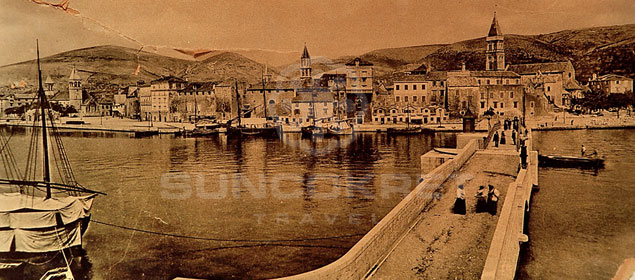
Trogir history – Bridge to Ciovo
New Ages
Trogir feel into the hands of the Republic on 20 June 1420. Legend has it that the captain of the people, Matija Drazzago opened the town gates for the Venetians to enter. Every two years new “count and captain” as well as new bishop were elected and they were Venetians. In the lather half of the 15th century, as a result of the Turkish invasion, the large Commune was reduced to just a narrow costal belt. Numerous villages in the hinterland were raided, while country people fled as far as Apulia. The countryside remained under populated till the 17th century migration movements from deer inland.
The former prosperous trade with distant countries, manufacture and exchange of the commune were gradually reduced to the commodities essential to the life of its population, although the trade links with Venice and Apulia were still maintained. Not even the salt-works in the marshy shallows opposite the town were closed down, even if the salt was not of the best quality. With this new policy of limited trade and systematically suppressed seafaring and shipbuilding, the town started legging behind the times.
To reinforce its rule Venice, among other things, forbid the nobility to use their mother tongue in the town hall. But the strong feeling of ethnic and historical links with the continental Croatia survived for a long time. The town count Girolamo Minio wrote to the authorities in the metropolis about his subjects who, disobeying his explicit order, joined the Croatian Army in the battle against the Turks under Klis.
It was with great relief that the Trogirians, in the general chaos following the collapse of Venice, met the Austrian Army which entered the town on 16 July 1797, under the command of general Mate Rukavina. At the Cathedral the Acclamations were sung in honor of the Austrian Emperor Francis I whom the citizens recognized for the legitimate successor to the Hungaro-Croatian throne.
The transitory French rule during Napoleon’s early 19th century conquests shook Trogir, as well as whole Dalmatia, out of is medieval lethargy. Roads and schools were built, while monasteries were closed down; school children were taught in their mother tongue; public health was improved and town was pulled down.
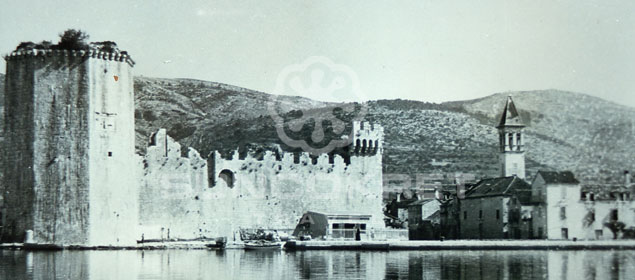
Trogir History – Kamerlengo
In the 19th century, when steamers gained decisive advantage over sailing vessels, Trogir saw a revival of maritime affairs. Yet up to World War II agrarian production remained the basis of the economy of the Commune. Many former shops were turned into stables. Ancient monuments were pulled down, while works of art were unprotected and often sold for a mere trifle.
After the golden period from the 13th to the 15th centuries, the euphoric late 19th and early 20th centuries were another splendid moment in the history of Trogir, marked by intensive building activity. Plans for joining Trogir to the railway network were laid out. The manufacturing industry of medicinal herbs was founded.
The period between two World Wars of the so called Old Yugoslavia was marked by revolutionary brewing of the politically popular classes which demanded radical agricultural reform. After the collapse of Italy, Trogir was ruled by the partisans from 12 September to 7 November 1943. One nigh between 27 and 28 November the People’s Liberation Army entered Trogir. The destroyed town met in with a decimated population, but free at last.